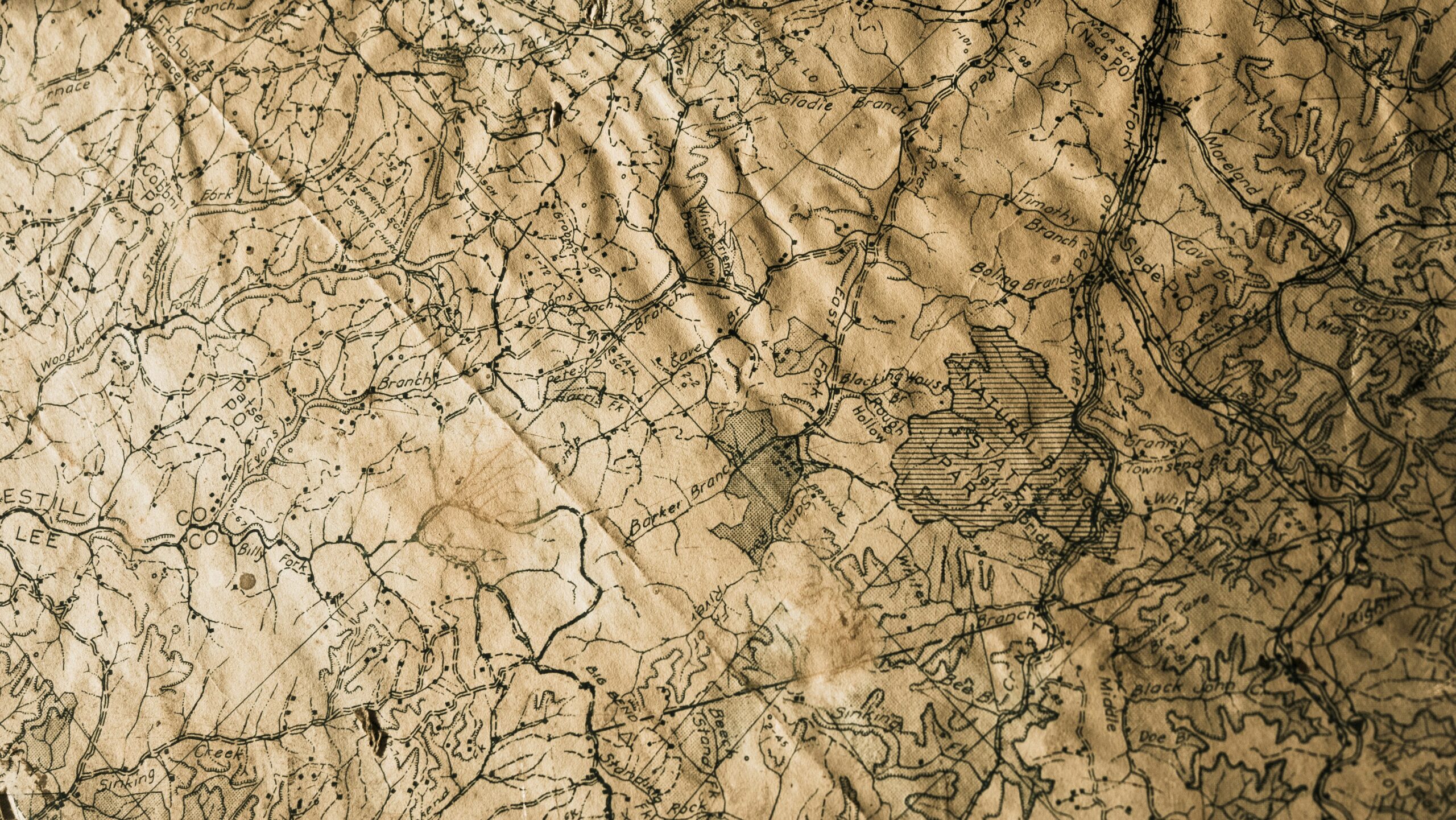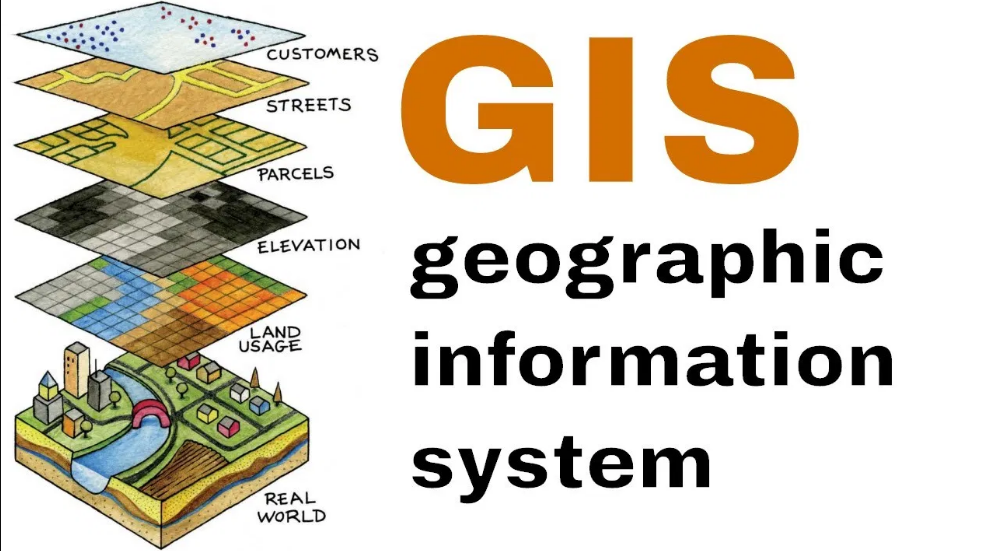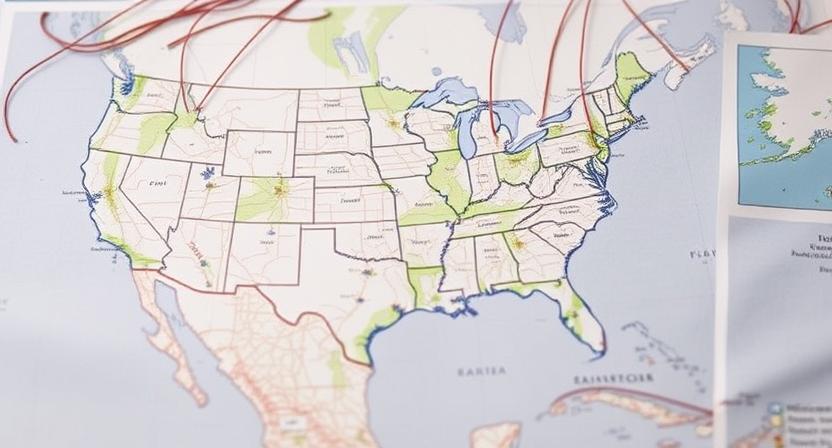
Why Maps are Essential for Hiking Planning
Maps play a crucial role in the planning phase of any hiking expedition. They provide a visual representation of the terrain, helping hikers identify key landmarks, trails, and potential hazards along their route. By studying maps before setting out on a hike, adventurers can better understand the topography and elevation changes they will encounter, allowing for more informed decision-making during the trek.
Apart from outlining the geographical features of a region, maps also aid hikers in estimating distances, planning routes, and navigating unfamiliar trails with confidence. Whether exploring a well-marked trail or venturing off the beaten path, having a map handy ensures that hikers can stay on course and reach their intended destination safely. In essence, maps serve as a valuable tool that empowers hikers to make strategic decisions, anticipate challenges, and make the most of their outdoor adventures.
• Maps provide a visual representation of the terrain
• Help hikers identify key landmarks, trails, and potential hazards
• Better understanding of topography and elevation changes
• Aid in estimating distances and planning routes
• Navigate unfamiliar trails with confidence
• Ensure hikers stay on course and reach their destination safely
Choosing the Right Map for Your Hiking Adventure
Choosing the right map for your hiking adventure is crucial for a successful and safe journey. When selecting a map, consider the scale that best suits your needs. Larger scale maps provide more detail but cover a smaller area, while smaller scale maps cover larger areas but with less detail. For hiking, a scale of 1:24,000 or 1:25,000 is typically recommended as it strikes a good balance between detail and coverage.
Additionally, ensure that the map you choose is up-to-date and accurately reflects the terrain and trails in the area you plan to hike. Look for maps that are waterproof and durable to withstand the elements you may encounter on the trail. Choose a map that includes relevant information such as topographic lines, landmarks, water sources, and trail systems to help you navigate effectively during your adventure.
• Consider the scale of the map: Larger scale for more detail, smaller scale for larger coverage
• Opt for a map with a scale of 1:24,000 or 1:25,000 for hiking adventures
• Choose an up-to-date map that accurately reflects terrain and trails in the area
• Look for waterproof and durable maps to withstand elements on the trail
• Ensure the map includes topographic lines, landmarks, water sources, and trail systems
Understanding Map Symbols and Legends
Map symbols and legends play a crucial role in understanding the features represented on a map. Symbols are graphical representations of different elements such as water bodies, trails, roads, and landmarks. Each symbol has a specific meaning that helps hikers interpret the information provided on the map accurately. Legends, on the other hand, provide a key to understanding the symbols used on the map. They explain the significance of each symbol and help hikers navigate the terrain effectively by identifying important landmarks and other points of interest. Familiarizing yourself with map symbols and legends is essential for successfully using maps for hiking planning and navigation.
When studying a map, pay close attention to the symbols and legends to gain a better understanding of the terrain and features depicted. By deciphering the symbols and referencing the legend, hikers can determine the location of trails, campsites, viewpoints, and other significant areas along their route. Understanding map symbols and legends enhances the planning process by allowing hikers to make informed decisions about the best routes to take based on the information provided on the map. By mastering these fundamental elements of map reading, hikers can confidently navigate their hiking adventures with greater precision and confidence.
• Map symbols are graphical representations of different elements on a map
• Symbols represent features such as water bodies, trails, roads, and landmarks
• Each symbol has a specific meaning that helps hikers interpret the information accurately
• Legends provide a key to understanding the symbols used on the map
• Legends explain the significance of each symbol and help hikers navigate effectively
• Familiarizing yourself with map symbols and legends is essential for successful hiking planning and navigation
When studying a map:
– Pay close attention to symbols and legends for better understanding of terrain
– Decipher symbols to determine location of trails, campsites, viewpoints, etc.
– Referencing legend helps in identifying important landmarks along route
– Understanding map symbols enhances planning process by making informed decisions about routes
– Mastering map reading fundamentals allows hikers to confidently navigate their adventures
Identifying Key Landmarks on a Map
When examining a map for a hiking adventure, identifying key landmarks is crucial for successful navigation. These landmarks can include prominent features like mountains, rivers, lakes, and distinct trail junctions. By locating these key landmarks on your map, you can establish reference points to orient yourself and track your progress along the route. Moreover, these landmarks serve as important indicators to ensure you stay on the right path and avoid getting lost in unfamiliar terrain.
• Mountains: Look for the highest peaks on the map to get a sense of elevation and direction.
• Rivers: Follow rivers or streams as they can lead you to other important landmarks or water sources.
• Lakes: Use lakes as points of reference, especially if they are large and easily identifiable.
• Trail junctions: Note where different trails intersect or diverge to avoid taking the wrong path.
Planning Your Route Using Contour Lines
Contour lines are a crucial element on a map that help hikers visualize the elevation changes along their intended route. By closely examining the contour lines, hikers can identify peaks, valleys, ridges, and slopes, allowing them to anticipate the level of difficulty and plan their path accordingly. Contour lines that are closely spaced indicate steep terrain, while lines that are further apart suggest more gradual slopes, helping hikers gauge the challenges ahead and make informed decisions about the route to take.
Understanding contour lines also enables hikers to identify key topographical features such as rivers, cliffs, and plateaus, which can serve as important landmarks for navigation. By tracing the contour lines on the map, hikers can plot a route that avoids obstacles and maximizes efficiency, ensuring a safer and more enjoyable hiking experience. Additionally, contour lines provide valuable insight into the overall terrain of the area, allowing hikers to strategize their ascent and descent effectively based on the contour intervals and patterns displayed on the map.
• Contour lines help hikers visualize elevation changes along their route
• Closely spaced lines indicate steep terrain, while further apart lines suggest gradual slopes
• Identify key topographical features such as rivers, cliffs, and plateaus for navigation
• Plot a route that avoids obstacles and maximizes efficiency by tracing contour lines on the map
• Gain insight into overall terrain to strategize ascent and descent effectively
Using Scale to Determine Distance on a Map
On a hiking adventure, understanding how to use the scale on a map is crucial for accurately determining distances between points. The scale represents the relationship between the measurements on the map and the actual distances on the ground. Typically, scales are presented as ratios, such as 1:24,000, where one unit of measurement on the map equals 24,000 units in real life. By utilizing this scale, hikers can estimate the distance they need to cover and plan their routes accordingly.
When using the scale to determine distance on a map, it’s important to remember that distances may vary based on the type of terrain and the elevation changes along the route. By taking the time to measure out distances accurately on the map, hikers can avoid underestimating the time and effort required to complete their journey. Additionally, factoring in the scale when planning your route can help hikers prepare for any challenging sections or unexpected obstacles they may encounter along the way.
• When using the scale on a map, always refer to the map’s legend to understand the ratio presented.
• Use a ruler or piece of string to measure distances accurately on the map based on the scale provided.
• Consider factors such as terrain and elevation changes when estimating distances between points on a map.
• Planning your route with the scale in mind can help you anticipate any challenges or obstacles you may face during your hike.
Utilizing Grid Coordinates for Navigation
Grid coordinates are a crucial aspect of navigation when using maps for hiking. By referencing a specific grid coordinate, hikers can pinpoint their exact location on a map with precision. This system allows for clear communication and accurate identification of key landmarks or meeting points during a hike. Understanding how to read and interpret grid coordinates is essential for successful navigation in various terrains and environments.
When using grid coordinates for navigation, hikers should ensure they are familiar with the coordinate system used on their map. Common coordinate systems include the Universal Transverse Mercator (UTM) grid and the Military Grid Reference System (MGRS). By mastering these systems, hikers can effectively communicate their location to others and efficiently locate points of interest on the map. Practicing the conversion of grid coordinates to geographic coordinates can further enhance a hiker’s proficiency in using maps for navigation purposes.
• Understanding grid coordinates is essential for precise navigation on maps during hiking
• Grid coordinates help hikers pinpoint their exact location on a map with accuracy
• Different coordinate systems like UTM and MGRS are commonly used for navigation purposes
• Mastering the conversion of grid coordinates to geographic coordinates can improve navigational skills
• Practice in using grid coordinates can enhance proficiency in reading and interpreting maps
Marking Points of Interest on Your Map
When preparing for a hiking adventure, marking points of interest on your map is a crucial step to enhance your overall experience. By pinpointing key landmarks, scenic viewpoints, water sources, or campsites on your map, you can easily navigate to these locations during your hike. This strategic planning not only helps in creating a well-rounded itinerary but also ensures that you make the most out of your time on the trail.
Additionally, marking points of interest allows you to stay organized and focused during your hike. By having a clear visual representation of the attractions along your route, you can make informed decisions about where to stop for breaks, take photos, or explore further. This proactive approach helps in maximizing your enjoyment of the surroundings and eliminates the need to constantly refer back to guidebooks or online resources for information while on the trail.
• By pinpointing key landmarks, scenic viewpoints, water sources, or campsites on your map, you can easily navigate to these locations during your hike.
• Strategic planning helps in creating a well-rounded itinerary and ensures that you make the most out of your time on the trail.
• Marking points of interest allows you to stay organized and focused during your hike.
• Having a clear visual representation of attractions along your route helps in making informed decisions about where to stop for breaks, take photos, or explore further.
• This proactive approach maximizes enjoyment of surroundings and eliminates the need to constantly refer back to guidebooks or online resources for information while on the trail.
Estimating Elevation Gain and Loss on Your Route
Estimating elevation gain and loss on your hiking route is crucial for understanding the physical demands of your adventure. By examining the contour lines on a topographic map, you can gauge the steepness of the terrain and anticipate any challenging ascents or descents along the way. Each contour line represents a specific elevation, and the closer together the lines are, the steeper the slope. By tracing your intended route on the map and adding up the elevation changes between points, you can calculate the total elevation gain and loss to expect during your hike.
This knowledge not only helps you mentally prepare for the physical exertion required but also enables you to plan your pace and breaks accordingly. Understanding the elevation profile of your hike can assist in pacing yourself to conserve energy for the more challenging sections and optimize your overall hiking experience. Additionally, being aware of the elevation changes allows you to anticipate potential viewpoints or scenic spots along the way where you can pause to rest and enjoy the surroundings.
• When estimating elevation gain and loss on your route, examining contour lines on a topographic map is essential.
• Contour lines represent specific elevations, with closer lines indicating steeper slopes.
• By tracing your route on the map and calculating elevation changes between points, you can determine total gain and loss.
• This information helps mentally prepare for physical exertion, plan pace and breaks, and conserve energy for challenging sections.
• Understanding the elevation profile allows for optimizing hiking experience by pacing yourself effectively.
• Anticipating viewpoints or scenic spots along the way based on elevation changes can enhance rest stops and enjoyment of surroundings.
Avoiding Hazards by Studying the Terrain on a Map
When planning a hiking trip, it is crucial to carefully study the terrain on a map to identify potential hazards along your route. By paying attention to contour lines, you can identify steep slopes, cliffs, or rocky areas that may pose a risk to hikers. Additionally, examining the map for water features such as rivers, lakes, or marshy areas can help you prepare for possible water crossings or areas prone to flooding.
Furthermore, studying the terrain on a map allows hikers to anticipate challenging sections of the trail, such as narrow ridges, dense vegetation, or areas with loose rocks. By familiarizing yourself with the terrain beforehand, you can plan alternative routes or adjust your hiking strategy to avoid these hazards. It is essential to be proactive in assessing potential risks to ensure a safer and more enjoyable hiking experience.
• Carefully study contour lines on the map
• Identify steep slopes, cliffs, or rocky areas
• Look for water features like rivers, lakes, or marshy areas
• Prepare for possible water crossings and flooding
• Anticipate challenging sections of the trail
• Identify narrow ridges, dense vegetation, or loose rocks
• Plan alternative routes if needed
• Adjust hiking strategy to avoid hazards
By being proactive and studying the terrain on a map before your hiking trip, you can better prepare yourself for potential hazards along the route. This not only ensures a safer experience but also allows you to enjoy your time in nature without unexpected obstacles. Remember that proper planning and preparation are key when it comes to outdoor activities like hiking.
Checking for Trail Closures or Restrictions on a Map
Before embarking on a hiking adventure, it is important to check for any trail closures or restrictions on the map. These can be crucial pieces of information that can impact your planned route and overall hiking experience. By being aware of any closures or restrictions beforehand, you can avoid potential setbacks and ensure a smooth and enjoyable adventure. It is recommended to regularly check for updates on trail conditions as they may change due to weather conditions, maintenance work, or other unforeseen circumstances.
Maps are valuable tools for hikers to stay informed about trail closures or restrictions. They provide a visual representation of the hiking area, allowing hikers to pinpoint specific trails and access relevant information about their current status. By cross-referencing maps with official sources or park websites, hikers can confirm if any closures or restrictions are in place and adjust their plans accordingly. Being proactive in checking for trail closures or restrictions on a map demonstrates responsible and mindful hiking practices.
• Before embarking on a hiking adventure, check for any trail closures or restrictions on the map
• This information can impact your planned route and overall hiking experience
• By being aware of closures or restrictions beforehand, you can avoid potential setbacks
• Regularly check for updates on trail conditions as they may change due to weather or maintenance work
Maps are valuable tools for hikers:
– They provide a visual representation of the hiking area
– Allow hikers to pinpoint specific trails and access relevant information about their status
– Cross-reference maps with official sources or park websites to confirm closures or restrictions
– Adjust plans accordingly based on the information gathered from maps
Being proactive in checking for trail closures or restrictions on a map demonstrates responsible and mindful hiking practices. It is important to prioritize safety and respect any guidelines put in place by authorities to ensure an enjoyable and safe outdoor experience.
Utilizing Map Apps and GPS Devices for Navigation
For hikers looking to enhance their navigation skills, map apps and GPS devices have become valuable tools. These technology-driven resources offer real-time tracking, route planning, and location pinpointing capabilities that can greatly aid in a successful hiking adventure. By utilizing map apps and GPS devices, hikers can ensure they stay on course, reach their intended destinations efficiently, and navigate unfamiliar terrains with confidence.
Map apps and GPS devices provide hikers with access to detailed maps, topographic information, and trail data, all at the touch of a button. This instant access to location data allows hikers to make informed decisions about their routes, monitor their progress, and adjust their plans as needed. With features like offline maps, live tracking, and geotagging, map apps and GPS devices have revolutionized the way hikers navigate the great outdoors, offering convenience and peace of mind during their hiking journeys.
• Map apps and GPS devices offer real-time tracking and route planning capabilities
• Hikers can pinpoint their location accurately using these tools
• Access to detailed maps, topographic information, and trail data at the touch of a button
• Instant access to location data allows hikers to make informed decisions about their routes
Creating a Backup Plan with Multiple Maps
When embarking on a hiking adventure, it’s crucial to always have a backup plan in place. One effective method is to ensure you have multiple maps handy for your journey. By having different maps at your disposal, you can cross-reference information, compare details, and have a contingency in case one map gets damaged or lost during your hike.
Having multiple maps not only adds a layer of safety to your outdoor exploration but also allows for a more comprehensive understanding of the terrain you’ll be navigating. Each map might offer unique perspectives, trail variations, or additional landmarks that could prove invaluable in making informed decisions along the way. So, before hitting the trail, make sure to gather a variety of maps to enhance your hiking experience and ensure a smoother journey ahead.
• By having multiple maps, you can cross-reference information and compare details
• Having a contingency plan in case one map gets damaged or lost during your hike is crucial
• Multiple maps allow for a more comprehensive understanding of the terrain you’ll be navigating
• Each map might offer unique perspectives, trail variations, or additional landmarks
• Gathering a variety of maps enhances your hiking experience and ensures a smoother journey ahead
Understanding Topographic Maps for Hiking Planning
Topographic maps are a valuable resource for hikers, offering intricate details about the terrain and elevation changes of an area. These specialized maps use contour lines to depict the shape of the land, helping hikers visualize slopes, valleys, and ridges. By studying these maps, hikers can plan their routes more effectively, anticipate challenging sections, and ensure they have a safe and enjoyable hiking experience.
In addition to contour lines, topographic maps provide information on key features such as rivers, lakes, forests, and trails. Hikers can use these details to identify landmarks, navigate through different landscapes, and stay oriented while exploring unfamiliar terrain. Understanding how to interpret the symbols and legends on a topographic map is crucial for hikers to make informed decisions about their routes and prepare for various conditions they may encounter along the way.
• Topographic maps use contour lines to show terrain elevation changes
• Contour lines help hikers visualize slopes, valleys, and ridges
• Studying topographic maps helps hikers plan routes effectively
• Maps provide information on key features like rivers, lakes, forests, and trails
• Understanding map symbols and legends is crucial for informed decision-making
• Helps hikers stay oriented in unfamiliar terrain
Using Online Mapping Tools for Pre-Trip Planning
When preparing for a hiking adventure, utilizing online mapping tools can greatly enhance your pre-trip planning experience. These tools offer detailed and interactive maps that allow you to explore different trails, access points, and terrain features before setting foot on the actual route. By studying the topography, elevation profiles, and trail conditions provided by online mapping tools, you can make more informed decisions about your hiking itinerary and ensure a safer and more enjoyable outdoor experience.
In addition to visualizing the terrain, online mapping tools often come equipped with features that enable you to customize your route, set waypoints, and calculate distances. This functionality can be especially helpful when determining the length and difficulty of your hike, as well as estimating the time required to complete the trek. By taking advantage of these tools, you can tailor your hiking plans to match your skill level and fitness capabilities, ultimately leading to a more rewarding and successful adventure in the great outdoors.
• Online mapping tools provide detailed and interactive maps for pre-trip planning
• Study topography, elevation profiles, and trail conditions to make informed decisions
• Customize routes, set waypoints, and calculate distances with online mapping tools
• Determine hike length, difficulty, and estimated time required for completion
• Tailor hiking plans to match skill level and fitness capabilities for a successful adventure
Cross-Referencing Maps with Trail Guides and Reviews
While maps provide crucial geographical information for hikers, combining them with trail guides and reviews can offer valuable insights for a successful hiking adventure. Trail guides often include detailed descriptions of routes, points of interest, and difficulty levels that can complement the information provided by maps. By cross-referencing the two sources, hikers can gain a more comprehensive understanding of the terrain, allowing them to make informed decisions about their routes and be better prepared for any challenges they may encounter.
Moreover, reviews from other hikers can offer real-time updates on trail conditions, unforeseen obstacles, and potential hazards that may not be evident on maps alone. By integrating these firsthand experiences with the visual representation provided by maps, hikers can adapt their plans accordingly and ensure a safer and more enjoyable hiking experience. Ultimately, by combining maps with trail guides and reviews, hikers can enhance their trip planning process and make the most of their time exploring the great outdoors.
• Trail guides provide detailed descriptions of routes, points of interest, and difficulty levels
• Cross-referencing maps with trail guides can offer a more comprehensive understanding of the terrain
• Reviews from other hikers offer real-time updates on trail conditions and potential hazards
• Integrating firsthand experiences with maps can help hikers adapt their plans accordingly
• Combining maps with trail guides and reviews enhances trip planning process for a safer and more enjoyable hiking experience
Collaborating with Other Hikers for Mapping Tips
When it comes to honing your mapping skills for hiking adventures, collaborating with other hikers can be a valuable resource. Sharing experiences and tips with fellow outdoor enthusiasts can provide insights that may not be readily apparent when tackling maps solo. By engaging in conversations with other hikers, you can gather diverse perspectives on route planning, map interpretation, and navigating challenging terrain.
Moreover, discussing mapping techniques with other hikers can open up new possibilities for optimizing your hiking experience. Learning from the experiences of seasoned hikers and novices alike can broaden your understanding of different mapping tools and strategies. Whether it’s exchanging recommendations for specific maps, deciphering intricate trail systems, or sharing real-time updates on trail conditions, collaborating with other hikers can enhance your overall preparedness and enjoyment during your outdoor excursions.
• Engaging in conversations with other hikers can provide diverse perspectives on route planning
• Sharing experiences with fellow outdoor enthusiasts can offer insights not readily apparent when mapping solo
• Collaborating with other hikers can broaden your understanding of different mapping tools and strategies
• Learning from seasoned hikers and novices alike can optimize your hiking experience
• Exchanging recommendations for specific maps and deciphering intricate trail systems are benefits of collaborating with other hikers
Staying Updated on Trail Conditions with Maps
Keeping abreast of trail conditions is crucial for any hiker heading out into the wilderness. Maps serve as valuable tools not only for route planning but also for staying informed about the latest updates on trail conditions. Before embarking on your hiking adventure, it is essential to consult current maps that provide details on factors such as trail closures, maintenance work, or any other hazards that may affect your journey.
By regularly checking and updating your maps with the latest information, you can ensure a smoother and safer hiking experience. Weather conditions, seasonal changes, and unexpected events can all impact trail conditions, making it imperative to stay informed. Utilizing maps that offer real-time updates and collaborating with local ranger stations or fellow hikers can help you make informed decisions about your route and adapt to any changes along the way.
• Regularly check and update maps with the latest information
• Weather conditions, seasonal changes, and unexpected events can impact trail conditions
• Utilize maps that offer real-time updates
• Collaborate with local ranger stations or fellow hikers for additional information on trail conditions.
Practicing Map Reading Skills Before Your Hike
Before embarking on a hiking adventure, it’s crucial to hone your map reading skills to ensure a safe and enjoyable journey. Take the time to familiarize yourself with different map symbols and legends, as well as understanding the key landmarks that will guide you along your route. By practicing reading and interpreting maps beforehand, you’ll feel more confident in navigating the terrain and making informed decisions during your hike.
Additionally, consider planning a mock hike in your local area using a map to test your navigation skills. This hands-on approach will help you gain practical experience in interpreting contour lines, estimating elevation gain and loss, and identifying potential hazards on the map. By simulating a hiking scenario with your map, you can refine your map reading abilities and enhance your overall preparedness for the actual adventure.
• Familiarize yourself with different map symbols and legends
• Understand key landmarks along your route
• Practice reading and interpreting maps before your hike
In addition to studying maps, planning a mock hike in your local area can be beneficial. This hands-on approach allows you to test your navigation skills in a practical setting. By interpreting contour lines, estimating elevation changes, and identifying hazards on the map during this simulation, you can improve your map reading abilities significantly.
By honing your map reading skills through practice and hands-on experience, you’ll be better equipped to navigate confidently during your hiking adventure. Remember that preparation is key when it comes to ensuring a safe and enjoyable journey in the great outdoors.
Reflecting on Your Map Use After the Hiking Adventure
Once you’ve completed your hiking adventure and safely returned, taking the time to reflect on your map use can provide valuable insights for future trips. Examining how effectively you navigated using the map, identified landmarks, and planned your route can help you pinpoint areas for improvement and enhance your skills for the next excursion. Consider what worked well and what challenges you encountered while using the map during your hike. Did you accurately estimate distances using the scale, or did you struggle with interpreting contour lines? Reflecting on these aspects can aid in refining your map reading abilities and boosting your confidence in navigating diverse terrains.
Additionally, reflecting on your map use after the hiking adventure can also help you evaluate the accuracy of your pre-trip planning. Did the map apps or online tools you utilized provide comprehensive information about the trails and terrain? Were there any discrepancies between the maps and the actual conditions on the ground? By identifying any discrepancies or gaps in your mapping resources, you can adjust your planning process for future hikes and ensure a more seamless and enjoyable outdoor experience. Reflecting on your map use not only enhances your navigational skills but also fosters a deeper appreciation for the role of maps in facilitating safe and successful hiking adventures.
• Reflect on how effectively you navigated using the map
• Identify landmarks and plan your route
• Pinpoint areas for improvement in map reading skills
• Consider what worked well and challenges encountered during the hike
• Evaluate the accuracy of pre-trip planning with map apps or online tools
• Check for any discrepancies between maps and actual conditions on the ground
• Adjust planning process based on identified gaps in mapping resources
• Ensure a more seamless and enjoyable outdoor experience through reflection on map use







